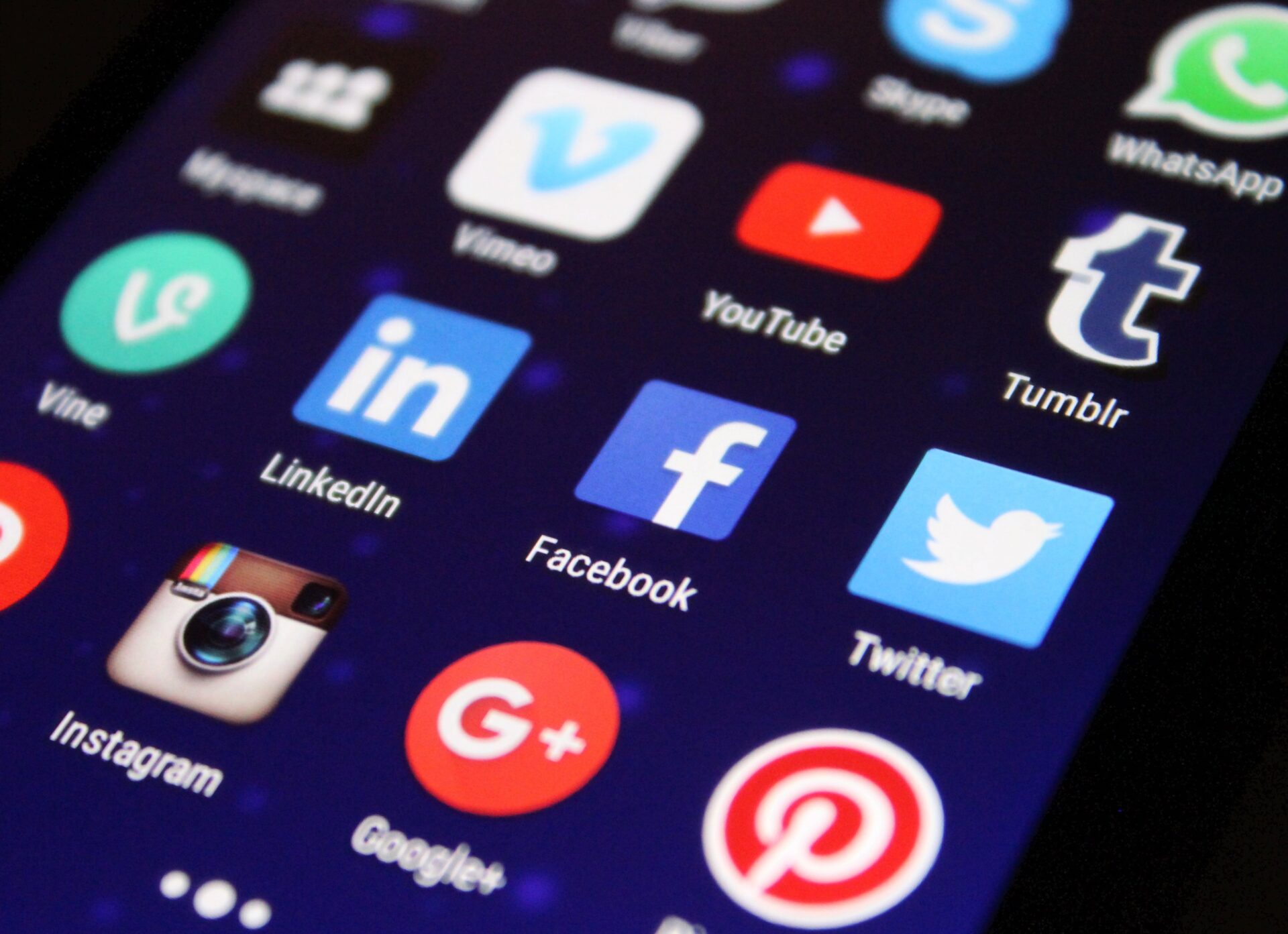In the world of social media, likes and shares might feel great, but do they mean business is booming? Research shows that 94% of leaders praise social media for boosting brand devotion.
This blog reveals how to truly gauge the impact of your online presence on business growth – beyond just counting hearts and thumbs-up. Discover key steps to success as we dig deeper.
Unveiling the Key Performance Indicators (KPIs) in Social Media

To truly measure the impact of social media on business growth, it’s crucial to look beyond likes and shares. The real key performance indicators (KPIs) lie in engagement rate, click-through rate (CTR), and conversion rate.
These metrics provide a deeper understanding of how social media is impacting your business.
Engagement Rate
Engagement rate is all about how much people interact with your posts on social media. It tells you if they like, comment, share, or click on your content. This number is super important because it shows if folks are really interested in what you’re sharing.
If lots of people talk about your posts and pass them around, it means you’re making a splash with your brand online.
Knowing this helps you see which posts work best and guides you to create more stuff that gets people talking. It’s a powerful way for business owners to connect with their audience and grow their company.
Before we move on, think about engagement rate as the heartbeat of your social media – if it’s strong and steady, so is your connection with customers. Now let’s dive into Click-Through Rate (CTR).
Click-Through Rate (CTR)
Click-Through Rate (CTR) is like a sign that shows if people are really interested in what you are sharing on social media. It counts how many times someone clicks on your post’s links or call-to-action buttons.
This number helps you know if your message makes people want to learn more or buy something.
A good CTR means your social media posts work well and grab attention. It tells you that your pictures, videos, or words make people act. They click because they want to see more of what you offer.
You can use this info to make even better posts in the future. Keep an eye on your CTR! It’s one of the main things to check when you’re seeing how well your digital marketing does its job.
Conversion Rate
Conversion rate is a key score for your business. It tells you how many people do what you want them to on your site, like buy something or sign up for news. To find out your conversion rate, just divide the total number of conversions from social media by the number of visits and times that by 100.
This gives you a percentage.
A good conversion rate means your social media work is paying off in real money or leads. Think about it as someone walking into your shop and leaving with a full bag—it’s what you want! Use clear call-to-action (CTA) buttons to guide customers.
Test different CTAs to see which brings the best results. Keep an eye on this number to make sure that clicks from social platforms turn into cash or contacts for your company.
Beyond Likes and Shares: The Real Impact of Social Media Marketing

Social media marketing goes beyond just getting likes and shares. It’s about creating micro-moments that lead to instant gratification, building genuine relationships with your audience, and increasing brand awareness through authentic engagement.
Micro-Moments and Instant Gratification
People now reach for their phones to find quick answers. These moments are called micro-moments, and they happen all the time. If you’re a business owner, know that customers might look up your product while watching TV or standing in a store.
They want fast information and might buy something right then. That’s why it’s important for your marketing to be there in those moments.
Smartphones have changed how we buy things. Everyone is used to getting what they need fast. Your social media needs to give people what they are searching for quickly, or you’ll miss out on sales.
Keep reading to find out about building strong connections with customers through social media.
Building Authentic Relationships
Social media helps businesses make real connections with people. This is key because a survey says customers expect brands to create online friendships. These bonds go deeper than just clicking like or sharing posts.
They come from real talks and shared stories over time.
Strong relationships between a brand and its audience can last long and be very powerful. Social media gives companies the chance to hear what their buyers are saying, answer them, and show who they really are beyond ads or products.
This way, brands get loyal fans who care about their story and trust them more each day.
Enhancing Brand Awareness
Growing your brand means more people know about it. Social media helps a lot with this. You can make and share things online to tell more people about your business. When folks like or talk about what you’ve posted, even more people find out who you are.
Good posts on platforms like Facebook or Twitter can spread far and wide. This way, your business becomes familiar to many. It’s like a digital word-of-mouth that boosts how visible you are online.
Using social media smartly is key for getting attention in the busy online world. It makes sure customers think of you first when they need something you offer.
The Power of Data Analysis and Continuous Improvement
Analyzing data and continuously improving social media strategies through A/B testing, audience segmentation, content optimisation, and social listening is vital for understanding customer behaviour.
Discover the true impact of social media on business growth by delving into the power of data analysis and continuous improvement.
A/B Testing
A/B testing is a tool that helps you compare different versions of your marketing to see which one works best. You can change things like your website’s landing page, the words in your emails or the pictures in your ads.
- Start by picking one thing to test, like the colour of a ‘Buy Now’ button on your site.
- Make two versions: the original is ‘A’, and the changed one is ‘B’.
- Show ‘A’ to some people and ‘B’ to others, making sure it’s random.
- Notice how many people do what you want them to do, like buying something or signing up, with each version.
- Use special maths called statistics to see if more people liked ‘A’ or ‘B’.
- Look for a big enough impact before deciding if a change is good.
- Check things like testimonials or safety symbols often used on sites to see if they help get more sales.
- Make sure your tests are fair by using A/A testing. This means you check two same things to ensure your tools work right.
- Keep on testing different things after finding out what works best. This helps you always make your business better.
Audience Segmentation
Effective audience segmentation involves dividing your customer base into subgroups based on certain criteria like demographics, interests, and behaviours. This allows you to create tailored marketing strategies, deliver personalised messaging, and refine your advertising efforts to resonate with specific consumer segments.
By leveraging data-driven segmentation and continuously refining your approach through audience analytics, you can optimise your marketing programs for better engagement and conversion rates.
With insights from social media statistics guiding customer profiling, business owners can craft targeted marketing approaches that speak directly to their audience’s needs and preferences.
Continuous Content Optimisation
- Data-Driven Analysis: Marketers rely on data analysis to understand campaign performance, audience engagement, and the effectiveness of content.
- A/B Testing: Through this method, marketers compare different versions of content to determine which performs better, allowing for continuous improvement based on real data.
- Audience Segmentation: By understanding specific audience segments, marketers can tailor content to different groups, increasing relevance and effectiveness.
- Social Listening: This involves monitoring and analysing conversations about the brand across social media channels, gaining valuable insights for content optimisation.
- Measurement and Improvement: Continuous measurement of key metrics allows for ongoing improvement in content strategies to enhance campaign success and business growth.
Social Listening
Moving from continuous content optimisation to social listening, business owners can understand the power of data analysis and continuous improvement in shaping their social media strategies.
Social listening involves monitoring social media channels for mentions of a brand, competitor brands, and related keywords. This approach offers valuable insights into engagement rates, sales outcomes, brand health, competitive standing, and performance benchmarks.
By analysing conversations and trends relevant to a company and its competitors through various tools available such as TechTarget and others, business owners can make informed decisions to strengthen their digital presence.
The Influence of Social Media on SEO Visibility and Success
Social media greatly affects SEO visibility and success. When businesses engage in effective social media strategies, they can improve their search engine rankings and attract more web traffic.
Social links and shares from platforms like Facebook, Twitter, and Instagram have a significant impact on search rankings. Optimising social profiles and posts increases brand discoverability through online searches.
Additionally, algorithms for search engine relevance take into account social signals such as followers sharing website content.
Moreover, the influence of social media exposure on SEO cannot be overstated. Businesses can reach a wider audience through social media platforms such as LinkedIn or Pinterest, thereby positively impacting their SEO performance.
As businesses strive to enhance their online presence, it becomes essential to harness the power of social networking for better brand visibility and recognition across digital channels.
Conclusion
In conclusion, measuring the true impact of social media on business growth goes beyond counting likes and shares. It involves meaningful metrics like engagement rate, click-through rate, and conversion rate.
By focusing on authentic relationships, data analysis, and SEO visibility, businesses can harness the real power of social media for tangible growth. The influence of social media is undeniable in today’s digital landscape, offering invaluable insights and opportunities for businesses to thrive.
FAQs
1. How can I measure the impact of social media on my business growth?
You can measure by analysing metrics like website traffic, conversion rates, customer engagement, and sales attributed to social media efforts.
2. What are some effective methods to track social media impact?
Effective methods include using web analytics tools, tracking referral traffic, monitoring conversions from social media campaigns, and conducting customer surveys or feedback analysis.
3. Can social media have a tangible impact on business growth beyond just brand awareness?
Yes, it can influence important business aspects such as lead generation, customer retention, market expansion opportunities and even revenue growth.
4. Is it crucial for every business to have a strong presence on all social media platforms?
Not necessarily. It’s more important to focus on platforms where your target audience is active and engage with them effectively rather than being present on every platform.
5. What role does content play in measuring the true impact of social media on business growth?
High-quality and engaging content plays a significant role in attracting and retaining customers which ultimately affects business growth through increased brand loyalty and conversions.


